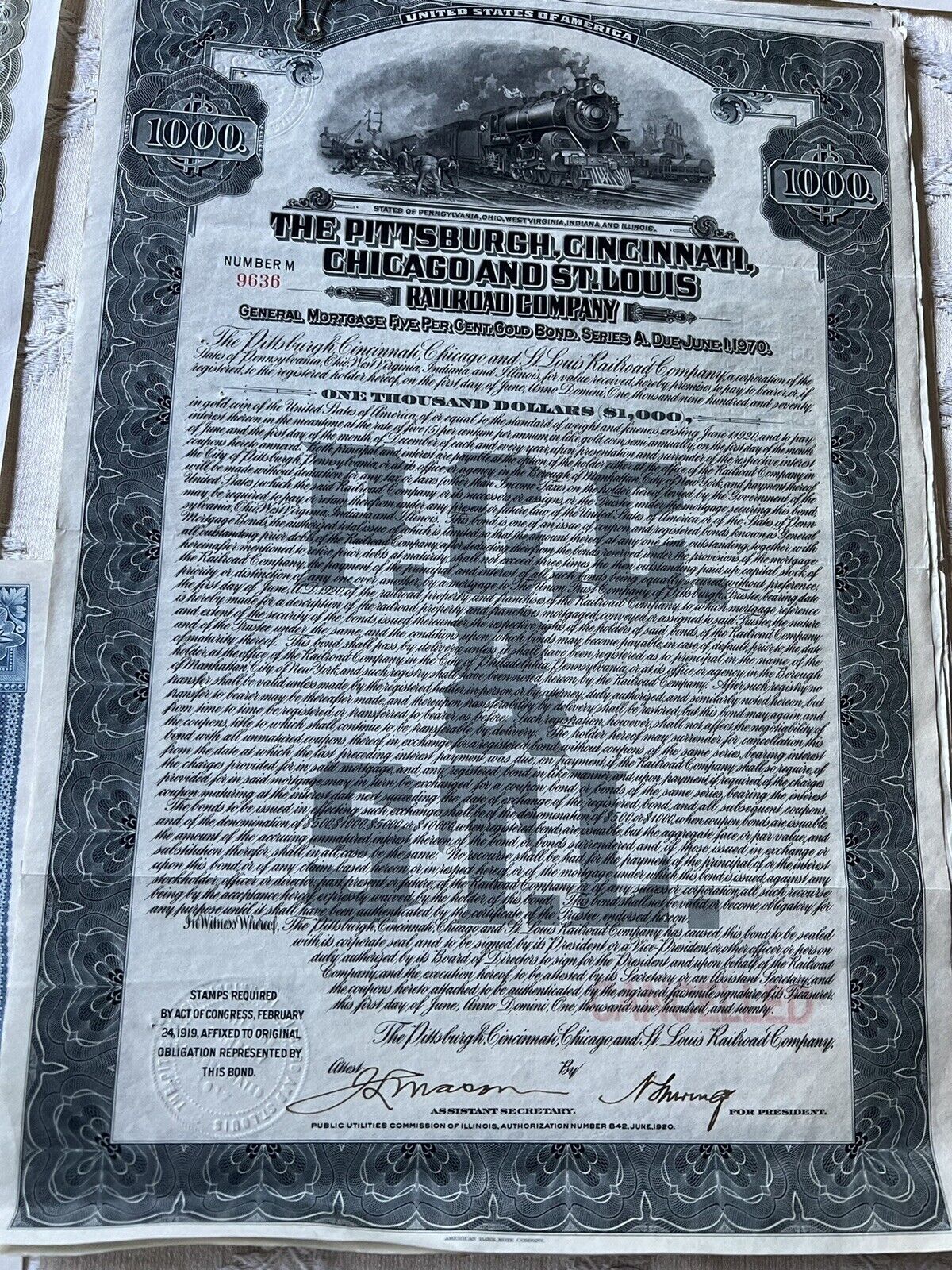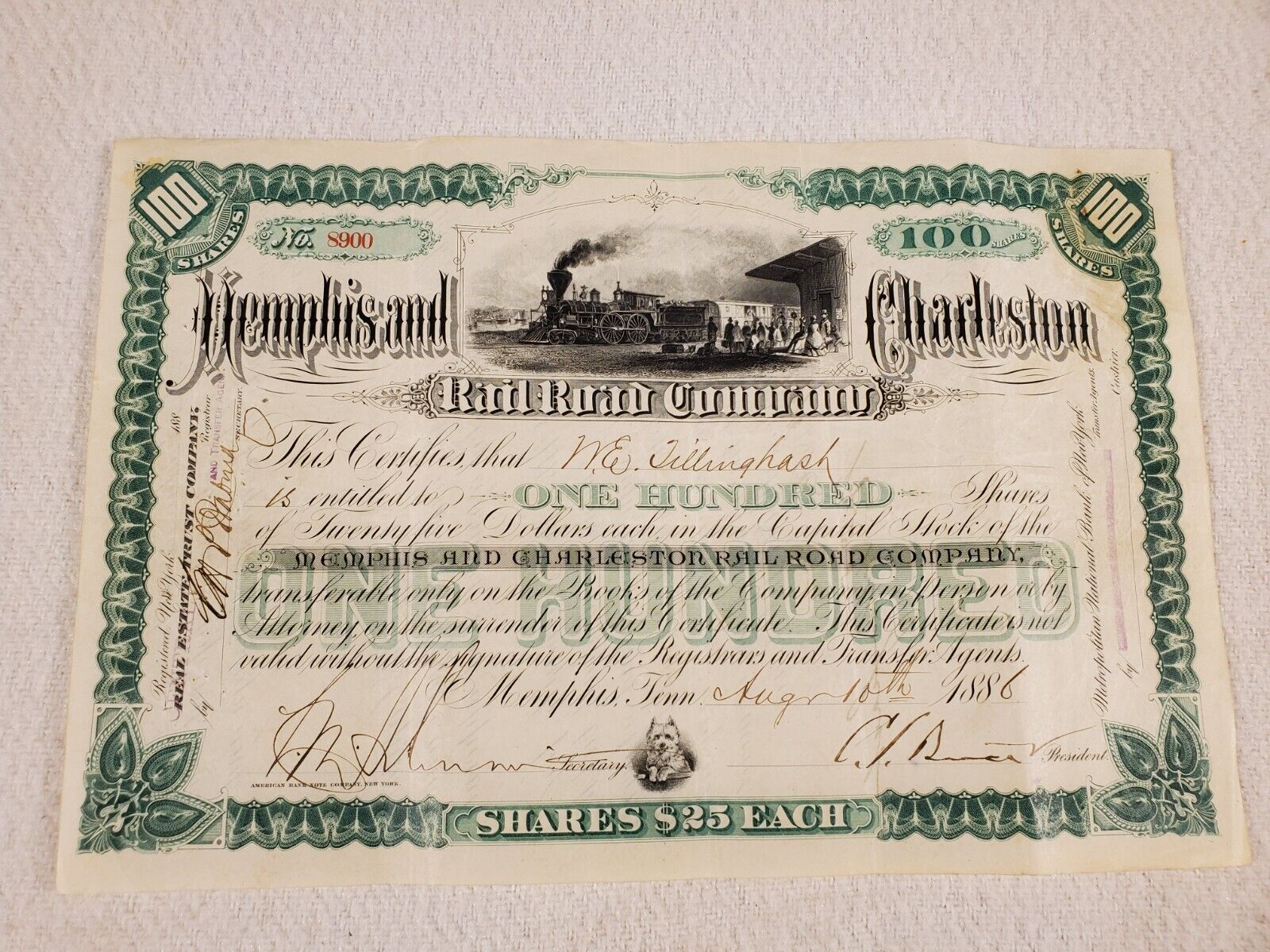-40%
Boston Elevated Railway Company Bond Certificate
$ 6.32
- Description
- Size Guide
Description
Boston Elevated Railway Company Bond CertificateThis piece is an Ebay exclusive. We are only offering this piece here!
The price of this piece has been reduced!!!
The original price of this item was .99. You now save 20%!!
The Boston Elevated Railway was a precursor first to the Metropolitan Transit Authority in Massachusetts , and now to the Massachusetts Bay Transportation Authority, operating rapid transit, streetcars and buses in the Boston, Massachusetts area. It was formerly known as the West End Street Railway.
The rapid transit lines have evolved into the Red, Blue and Orange Lines. The only streetcars that remain are the various branches of the Green Line and the Ashmont-Mattapan High Speed Line; the rest have been converted to buses.
The Boston Elevated Railway operated in the following cities and towns:
Arlington
Belmont
Boston
Brookline
Cambridge
Chelsea
Everett
Malden
Medford
Newton (only to get between Boston and Watertown)
Somerville
Stoneham (only the southern bit, in the Middlesex Fells)
Watertown
Additionally, streetcars from adjoining towns, run by other companies, operated over Boston Elevated Railway trackage.
Originally intended to build a short electric trolley line to Brookline, the West End Street Railway was organized in 1887. By the next year it had consolidated ownership of a number of horse-drawn streetcar lines, composing a fleet of 7816 horses and 1480 rail vehicles. As the system grew, a switch to underground pulled-cable propulsion (modeled after the San Francisco cable cars) was contemplated. After visiting Frank Sprague and witnessing the Richmond, Virginia system in action, WESR President Henry Whitney chose to deploy electric propulsion systems. A section of track tested the Bentley-Knight underground power line, but this was abandoned because of failures and safety concerns (especially after the electrocution of a team of horses in 1889). After competing in operational tests with the Sprague streetcar system, the Thompson-Houston company was chosen for system-wide deployment of overhead wires.
The first electric trolley line built by the West End Street Railway was between Union Square, Allston and Park Square, downtown, via Harvard Street, Beacon Street, Massachusetts Avenue and Boylston Street. Trolleys first ran in 1889. The Green Line "A" Branch later served roughly the same purpose.
The last horse car line was along Marlborough Street in the Back Bay, and was never electrified. It was closed around 1900.
In the late 1800s, the electric power industry was in its infancy; the power grid as we know it today simply did not exist. The railway company constructed its own power stations; by 1897, these included distributed generation stations in downtown Boston, Allston, Cambridge (near Harvard), Dorchester, Charlestown, East Cambridge, and East Boston. By 1904, the system had 36 megawatts of generating capacity, 421 miles of track for over 1550 street cars (mostly closed but some open), and 16 miles of elevated track for 174 elevated cars.
The first bus route was in 1922, between Union Square, Allston and Faneuil Street. In 1933 this was merged with the Union Square - Central bus and later became the 64 bus.
The difficulty of transporting coal over land from the Port of Boston and the short range of the direct current system prevented significant expansion inland. In 1911, a large generating station was built in South Boston which produced 25 Hertz alternating current, which could be transmitted long distances at high voltage, to substations which would drop the voltage for use by trains. The system was gradually converted until completion in 1931, when 14 substations were in place. This station would operate until 1981, when the MBTA decided to purchase energy from local utility companies instead of running its own generators.
The first trackless trolley route was the 77 (later 69) Harvard - Lechmere via Cambridge Street on April 11, 1936; trackless trolleys still run from Harvard station (on Routes 71, 72, 73, and 77A).
Operations of the company were taken over by the Metropolitan Transit Authority in 1947.
Frequently Asked Questions:
Is the certificate in this listing, the exact piece I will receive?
For this listing - no, t
he images are representative. We do this when multiple quantities are being offfered. You will receive a certificate in similar condition; however dating, denomination, certificate number and issuance details may vary.
Is this document authentic or a reproduction?
All pieces we offer are originals - we do not sell reproductions. If you ever find one of our pieces not to be authentic, it may be returned at any time.
Can this certificate be cashed in?
All of our certificates are sold only as collectible pieces, as they are either canceled or obsolete. Certificates carry no value on any of today's financial indexes and no transfer of ownership is implied.
Do you combine shipping?
We offer flat rate shipping - whether you order 1 certificate or 100 - you pay only the published flat rate.
To take advantage of our flat rate shipping offer,
you must add all of the pieces you would like to your eBay cart
and perform a single checkout. If you use "Buy It Now" for each individual certificate, you will be charged a shipping charge each time - this is a limitation of the eBay system.
Is all of your inventory on eBay?
Absolutely not! We have 1,000s of certificates on our website.










